You’ll need to choose between mushroom heaters for 360-degree coverage or wall-mounted units for targeted warmth, then select natural gas for permanent cost-effective heating or propane for flexibility. Calculate 30-40 BTUs per square foot of your dining area and position heaters to create overlapping warmth zones without cold spots. Match finishes like stainless steel or bronze to your restaurant’s aesthetic while maintaining proper safety clearances. These fundamentals will help you discover the specific strategies that maximize guest comfort and revenue.
Choose the Right Infrared Heater Type for Your Space
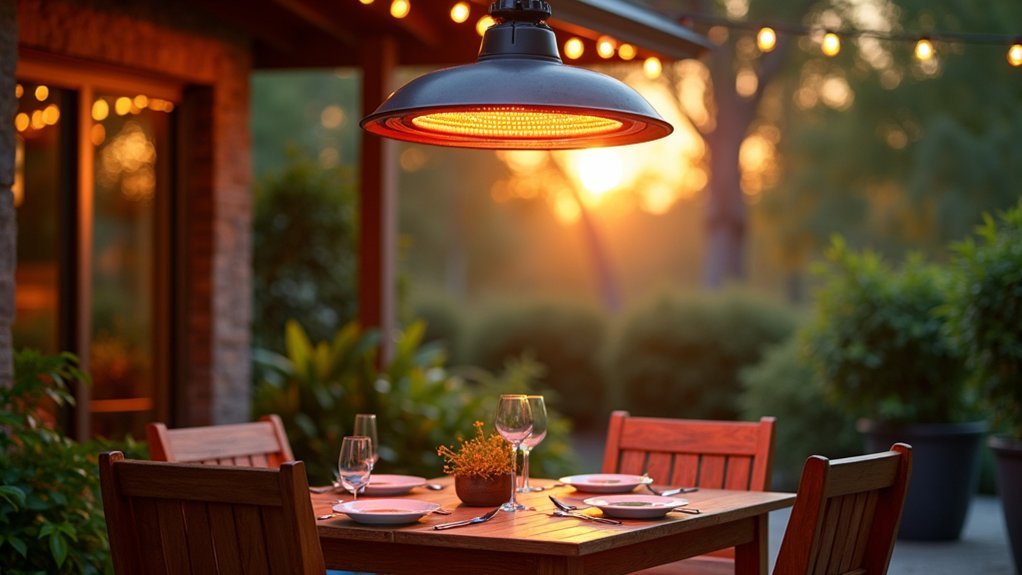
Success in patio heating starts with selecting the right infrared heater type for your specific space and needs.
Mushroom infrared heaters deliver 360-degree radiant heat, warming objects directly to create comfortable outdoor dining experiences in open areas. For targeted coverage, horizontal infrared heaters mount securely on overhangs, walls, or posts, providing focused heat distribution to specific zones.
Consider your fuel preferences when choosing your heater system. Natural gas heaters offer cost-effective solutions for permanent installations, while propane heaters provide flexibility for portable outdoor spaces arrangements.
Match BTU ratings to your patio’s size for effective heating performance.
Don’t overlook aesthetics—finishes from trusted brands complement your restaurant’s décor while delivering reliable warmth, ensuring your outdoor spaces remain inviting throughout cooler seasons.
Select the Optimal Fuel Source for Cost and Convenience
While choosing the right heater type sets the foundation, selecting an ideal fuel source directly impacts your operational costs and day-to-day convenience. Natural gas emerges as the most cost-effective option for outdoor heating, especially when existing gas lines are available. Propane offers unmatched flexibility with portable tanks, while electric infrared heaters provide clean, simple installation requirements.
| Fuel Type | Cost per BTU | Key Advantage | Best For |
|---|---|---|---|
| Natural Gas | $0.01-$0.02 | Lowest operational costs | Permanent installations |
| Propane | $0.03-$0.04 | Maximum flexibility | Mobile heating needs |
| Electric | Varies | Clean operation | Safety-focused venues |
Evaluate your restaurant’s access convenience and installation requirements to determine the best heating solution. Consider average BTU costs alongside your specific operational needs for maximum efficiency.
Strategic Placement and Mounting for Maximum Coverage
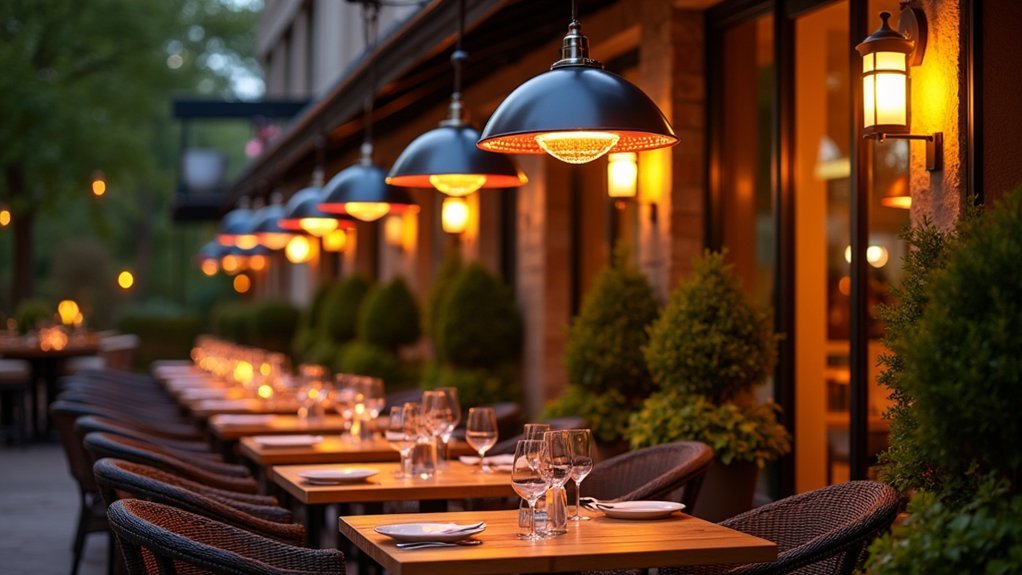
After securing the right fuel source for your budget and operational needs, proper heater placement becomes your next priority for creating comfortable dining zones.
Strategic placement of infrared heaters guarantees maximum coverage across your outdoor dining areas by creating overlapping warmth zones that eliminate cold spots during peak service.
When you evaluate layout, consider mounting options that match your space. Mushroom head heaters deliver 360-degree radiant heat for open areas, while wall-mounted units work well in enclosed patios.
You’ll need proper clearances from combustible materials as essential safety features.
Factor in local wind patterns and guest seating arrangements to enhance heat distribution. This approach ensures ideal heat delivery and consistent warmth, keeping diners comfortable even during cold weather conditions.
Match Heater Design to Your Restaurant’s Aesthetic
When selecting infrared patio heaters, you’ll want to choose designs that seamlessly blend with your restaurant’s existing aesthetic rather than clash with your carefully curated outdoor atmosphere.
Consider finishes like stainless steel, antique bronze, or jet silver that complement your exterior design. Modern Carbon Fiber Series heaters enhance contemporary settings, while Decor Series models suit upscale dining establishments perfectly.
Choose customized mounting options—wall or ceiling-mounted models—that integrate smoothly into your layout without disrupting visual appeal.
Stylish chandelier-like hanging heaters from brands like Sunglo don’t just provide warmth; they’re decorative elements that enhance ambiance.
The right infrared heater design aligns with your brand identity, creating an inviting atmosphere that attracts customers to your outdoor dining space.
Calculate Heating Capacity Based on Dining Area Size
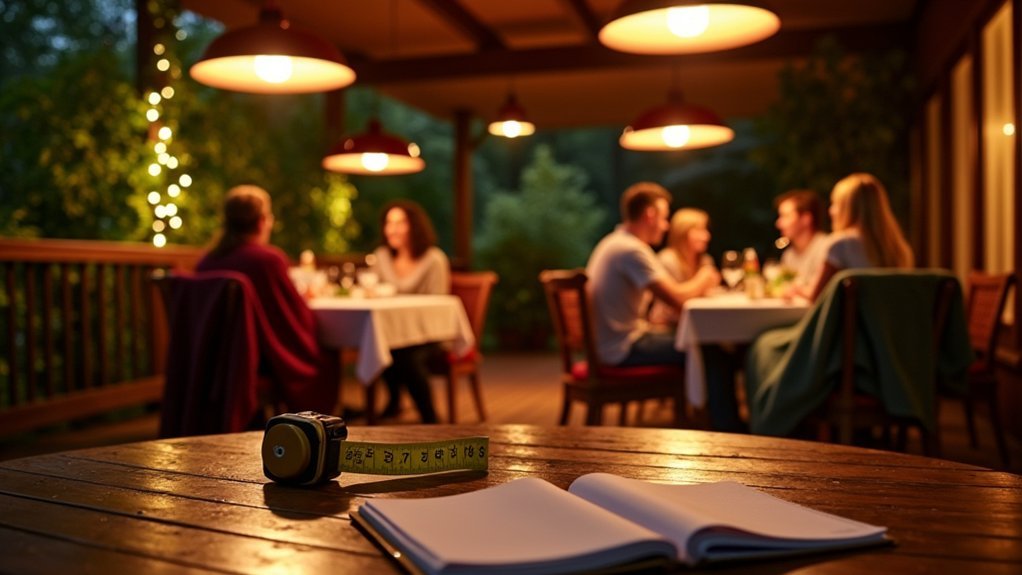
Beyond selecting heaters that complement your restaurant’s visual appeal, you need to determine the proper heating capacity to keep your outdoor diners comfortable.
To calculate the heating capacity for your dining area, measure the square footage by multiplying length and width. Apply the general rule of 30-40 BTUs per square foot for effective outdoor heating during cooler months. For instance, a 500-square-foot patio requires 15,000-20,000 BTUs.
However, don’t rely solely on square footage calculations. Consider ceiling height, wind exposure, and typical guest capacity, as these factors greatly impact infrared heating efficiency.
Always consult manufacturer specifications for BTU recommendations specific to your chosen heater type to guarantee ideal comfort and performance.
Frequently Asked Questions
What Is the Most Efficient Way to Use an Infrared Heater?
Position your infrared heater to create overlapping coverage zones, match BTU ratings to your space size, and choose low-intensity models for even heat distribution across larger areas.
What Are the Downsides of Infrared Heating?
You’ll face higher upfront costs, inconsistent heating in large spaces, reduced efficiency in windy conditions, and potential installation limitations. Air temperature stays cooler since infrared primarily warms objects directly.
Do Infrared Patio Heaters Use a Lot of Electricity?
No, infrared patio heaters don’t use excessive electricity. You’ll typically consume 1,500-2,500 watts, but they’re 90% efficient and heat objects directly, reducing waste and lowering your overall energy costs.
Do Infrared Patio Heaters Work Well?
Yes, infrared patio heaters work exceptionally well. You’ll experience instant warmth since they directly heat people and objects rather than air. They’re wind-resistant, energy-efficient, and provide consistent comfort in outdoor spaces.

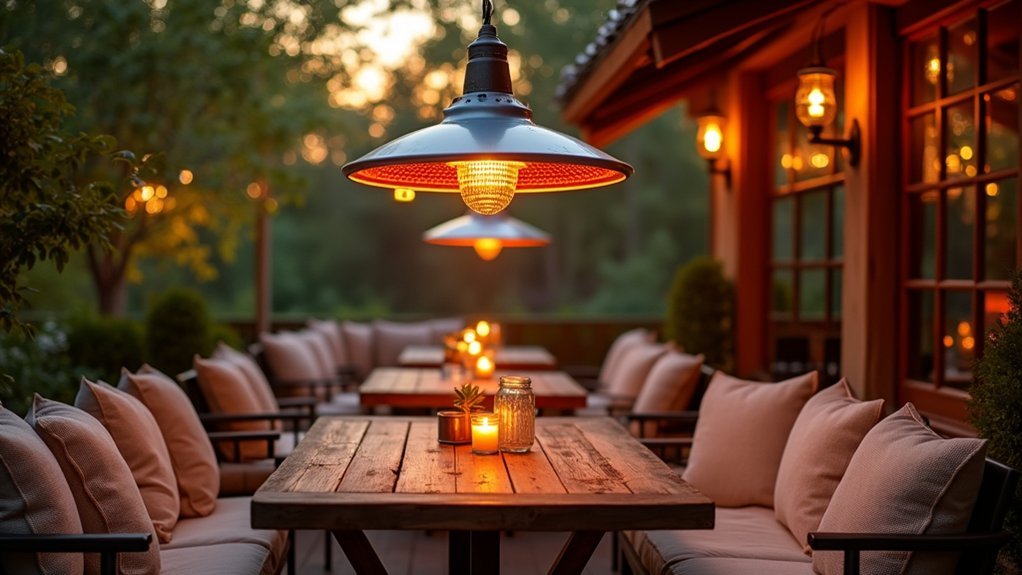


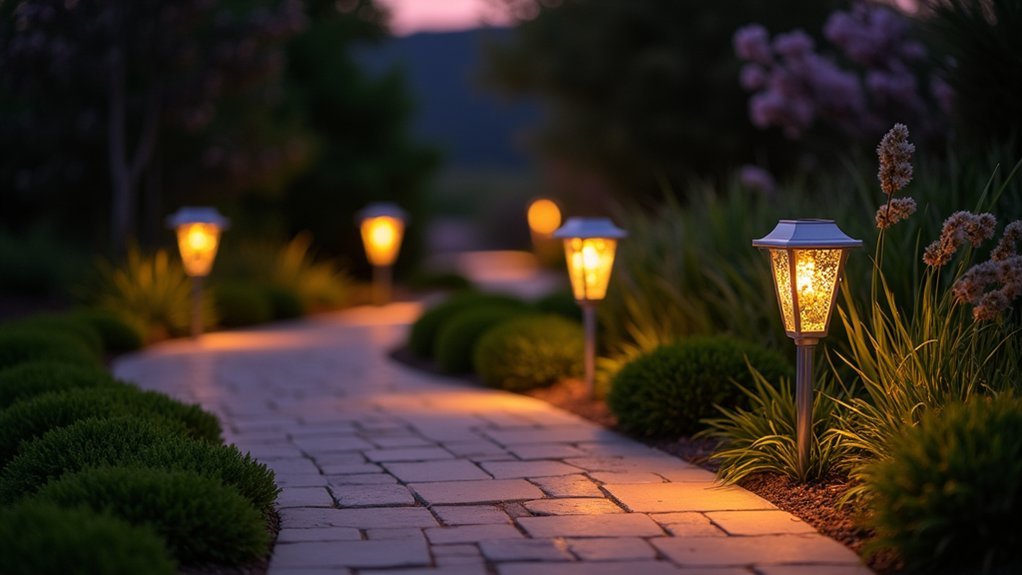
Leave a Reply